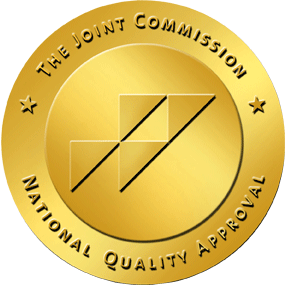Benzodiazepines (commonly known as “benzos”) are prescription medications used to treat anxiety, panic disorders, insomnia, and seizures. Some of the most widely recognized include Xanax, Ativan, and Valium. While these medications can offer quick relief, they also come with a hidden danger: the potential for dependence and misuse.
If you or a loved one is having trouble managing benzo use, it helps to understand why this happens, what’s going on in the brain, and how you can protect yourself from a full-blown benzodiazepine use disorder. Let’s explore this topic in greater detail.
The Role of GABA: Your Brain’s Natural Calming System
Benzodiazepines boost the activity of gamma-aminobutyric acid (GABA), a calming neurotransmitter that helps quiet the brain and reduce nervous system activity. GABA’s main job is to slow down brain activity and help regulate functions like mood, sleep, and stress response.
When you’re anxious or under stress, your brain’s excitatory signals can go into overdrive. This leads to racing thoughts, muscle tension, restlessness, and trouble sleeping. GABA helps quiet that overactivity and restore balance.
Benzos don’t create GABA, but they make GABA more effective by binding to specific receptors in the brain called GABA-A receptors. This amplifies GABA’s calming effects, leading to feelings of relaxation, drowsiness, and reduced anxiety, often within minutes.
Why Benzos Are So Addictive
While this calming effect can be helpful in acute situations, it comes at a cost. The brain quickly adapts to the presence of benzos, and over time, these changes can lead to tolerance, dependence, and addiction.
Here’s how it happens:
Tolerance Builds Quickly
The more often you take benzos, the less sensitive your brain becomes to their effects. This means you need higher doses to get the same relief, a slippery slope that increases the risk of misuse.
The Brain Slows Its Own GABA Production
Because benzos enhance GABA so effectively, the brain may reduce its own GABA production in response. This can leave you feeling anxious, irritable, or unable to sleep without the medication.
Dependence Develops
After a period of regular use, the brain becomes dependent on benzos to function “normally.” Stopping them suddenly can result in withdrawal symptoms like panic attacks, insomnia, tremors, and in severe cases, seizures.
Cravings and Psychological Addiction
In addition to physical dependence, benzos can become psychologically addictive. If someone begins using them to escape stress, numb emotional pain, or avoid uncomfortable feelings, they may turn to the drug again and again to cope, leading to compulsive use and addiction.
Short-Term Fix, Long-Term Risk
Benzodiazepines are not inherently “bad,” and they can be very effective when used short-term and under close medical supervision. However, they are not designed for long-term use. Chronic or unsupervised use significantly increases the risk of dependence and makes withdrawal more complicated and dangerous.
So how long should you be on this medication? Experts usually recommend no more than 2 to 4 weeks, including the time it takes to taper off the medication if needed. During this time, your symptoms will be better managed and you can start working toward the root causes of your symptoms, such as underlying anxiety or trauma. This is far more sustainable than just relying on benzos, as they do not address the deeper issues.
Safer Alternatives and Treatment Options
If you or someone you love is experiencing benzodiazepine use disorder, know that you’re not alone and help is available. Treatment usually begins with gradual tapering under medical supervision, as benzo withdrawal can be serious and life-threatening. It is made safer and more comfortable with the proper support.
Once the body is stable, you can move onto therapy and counseling to address the root causes of your symptoms and learn healthier ways to cope. Some of the most effective treatment options include cognitive behavioral therapy (CBT) to address underlying anxiety without relying on medication, trauma-informed care if benzo use is tied to unresolved emotional pain, and support groups and relapse prevention programs to maintain long-term recovery.
Antidepressants can also help manage the symptoms of chronic anxiety and may be prescribed as needed. It’s also important to have healthy outlets for stress management, which is why many individuals make healthy lifestyle changes and replace unhealthy behaviors with safer options like mindfulness, EMDR, journaling, deep breathing, and hobbies.
Treatment for Benzodiazepine Use Disorder in Santa Rosa, CA
Benzodiazepines work by enhancing GABA, the brain’s natural calming chemical. While this can bring short-term relief from anxiety or stress, the long-term impact can alter brain function and create a cycle of dependence. Understanding how benzos affect the brain is the first step in using them safely or beginning the journey to recovery if addiction has taken hold.
If you’re concerned about your use of benzodiazepines, reach out to Pura Vida Recovery in Santa Rosa, CA. We have comprehensive programs to help our clients reach healing, along with sober living options to ensure a healthy and sustainable path forward.





